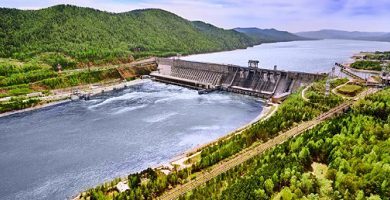What was the Latin American boom?
We explain what the Latin American Boom in literature was, its characteristics and recurring themes. In addition, more important authors.
-
What was the Latin American boom?
The term Latin American Boom means a literary and editorial phenomenon that took place between the 1960s and 1970s , when the literary works of a group of young Latin American writers was widely distributed and appreciated in Europe and much of the world.
These works changed the paradigms of what until then was expected literarily from the region . Or as Chilean author José Donoso describes it: “… a dozen novels that were at least notable had broken into a space before deserted.”
The Latin American Boom instituted many of the authors that today we consider classics in Latin America, but that at the time were beginning. They presented experimental novel projects, of high social and political content .
Thus, they became an avant-garde gesture , especially in Europe and other latitudes, then dominated by rather conservative considerations. The first step in this internationalization was, in that sense, the triumph of these authors in Spain.
Some Boom names are better known than others, and some of their authors enjoyed greater formal recognition than others. However, there are really no start and closing dates for the Boom, since it was not really an organized literary movement, but rather an editorial phenomenon.
Therefore, there is no formal list of its members, nor of the precursors that served as a school for the appearance of this important generation of Latin American writers.
At the same time, the Latin American Boom opened great doors to Latin American literature . It quickly became a literary reference in the Hispanic world and outside it, through successive translations and editions throughout the globe.
In particular, the American public was impacted by the works of the Boom, in a very challenging world political context such as the Cold War, changing even paradigms of the moment regarding the interpretation and the role of writers in society .
-
Origin of the Latin American Boom
The boom begins in the 1960s . It was a particularly conflictive time in Latin America due to the Cold War and its tensions between revolutionary movements, such as the triumphant Cuban Revolution of 1959, and the American political and diplomatic interference against it, which financed bloody right-wing dictatorships in Latin America.
This panorama was further complicated when the intellectuality of the continent was divided into opinions about the regime of Fidel Castro after the imprisonment in 1967 of the Cuban poet Heberto Padilla and his wife, Belkis Cuza Malé, accused of subversive activities for having publicly read the poem “Provocations.”
In this context the Boom novels emerged , taking advantage of the sudden interest in Latin America that the era had aroused. From the editorial colossus Seix-Barral, Carlos Barral and the literary agent Carmen Balcells, took the initiative to disseminate Latin American works .
Both were installed in Barcelona and defined a particular projection towards the French-speaking markets. It has even been claimed that the massive sales of these Latin American novels practically revived the dying Spanish publishing industry, subject to the censorship of the Franco regime.
-
Characteristics of the Latin American Boom

The boom was an essentially editorial phenomenon and focused mainly on the genre of the novel. The novelistic projects that tended towards formal experimentation , language innovation and certain social and political dares were highlighted .
A common feature of these novels is his desire for avant-garde: treatments of time in a non-linear way, bet on polyphony or the appearance of multiple voices in the story, abundant use of neologisms and puns. It emphasized a certain internationalism or regional and national identity that did not depart from the historical account, but used it as a backdrop.
His themes and perspectives renewed a noticeable stagnation in the literary realism of the time, and led to the emergence of new names to the Hispanic editorial arena. On the other hand, the boom has been criticized for consisting entirely of male writers , in whose novels the treatment of the feminine evidences the prevailing machismo in Latin America.
In addition, they mostly came from enlightened and university sectors of society, with important access to universal culture. In other words, they were little representative of the Latin American people of the time.
-
Latin American Boom Issues
There is no thematic unit in boom novels. This is because their bets always respond to the universe of interests and the personal style of the author.
However, in broad strokes it can be said that the Boom preferred issues related to the national, regional or whatever aspired to a new Latin American identity . Consequently, these works aimed to replace old common places with archetypes that, in turn, would become classics very quickly.
Something important is the breaking of the barriers between the fantastic and the everyday . Thus, aspects such as Magic Realism appeared, on the one hand, using a certain air of Latin American exoticism to narrate wonderful events from a realistic perspective.
On the other hand, historical fiction, strongly anchored in the political tensions of the real , had its place in Boom novels. Many of them explored the theme of the Latin American Dictator, such as Yo, El Supremo (1974) of the Paraguayan Augusto Roa Bastos.
-
Authors and works of the Latin American Boom

The main authors of the boom (and its main novels) were four, of different nationalities:
- Julio Cortázar (Argentina, 1914-1984). Exiled in France during the presidency of Juan Domingo Perón, he was an open enthusiast of the Cuban and Sandinista Revolutions, as well as the government of Salvador Allende in Chile. His work of stories and novels ventured into the fantastic with great success. His novel Rayuela (1963) consolidated his entry into the Boom, and it is a text that can be read according to multiple routes, not necessarily in a linear fashion.
- Gabriel García Márquez (Colombia, 1927-2014). Journalist by profession and winner of the Nobel Prize for Literature in 1982, he became famous for his entry to the Boom during his stay in Europe, before residing for the rest of his life in Mexico, with his novels The colonel has no one to write to him ( 1962), One Hundred Years of Solitude (1967) and The Autumn of the Patriarch (1975), among others.
- Carlos Fuentes (Mexico, 1928-2012). Born in Panama, the son of Mexican diplomats, he was an important critic and fighter against discrimination in Mexico, and a professor at prestigious American universities. His work The Death of Artemio Cruz (1962) catapulted him to fame, because there he narrates the life of a former Mexican revolutionary on his deathbed. He also became famous for Aura (1962) and Terra nostra (1975).
- Mario Vargas Llosa (Peru, 1936-). One of the greatest Latin American novelists of the twentieth century, winner of the Nobel Prize for Literature in 2010, is a lawyer by profession and holds the noble title of Marquis de Vargas Llosa, granted by the King of Spain Juan Carlos I. He was a particular enthusiast of the Cuban Revolution in its beginnings, although later it became a strong opponent of it. His international success began with his novel La ciudad y los perros (1962), La casa verde (1965) and Conversation in La Catedral (1969), although he later published several books on journalism, essays and literary criticism.
The boom, however, also enshrined other authors of other nationalities, which are well worth highlighting, given that their works were of equal significance for the history of Latin American literature, such as:
- Juan Rulfo (Mexico, 1917-1986), and his books Pedro Páramo (1955) and El llano en llamas (1953).
- Augusto Roa Bastos (Paraguay, 1917-2005), with his novel Yo, El Supremo (1974).
- Manuel Puig (Argentina, 1932-1990), with his novels Boquitas painted (1969) and The Kiss of the Spider Woman (1976).
- Miguel Ángel Asturias (Guatemala, 1899-1974), author of Mr. President (1967).
- José Donoso (Chile, 1924-1996), with The Obscene Bird of the Night (1970).





